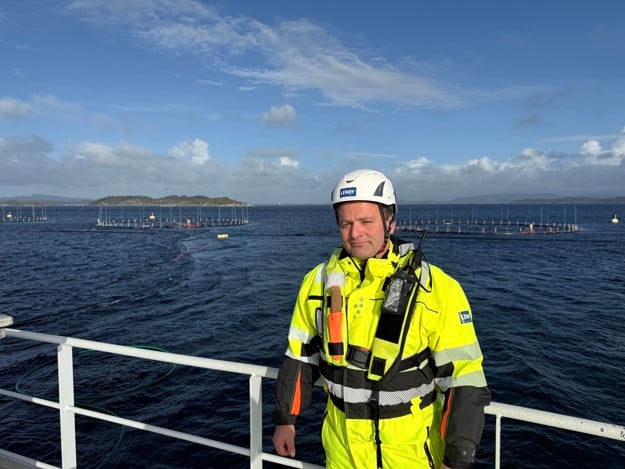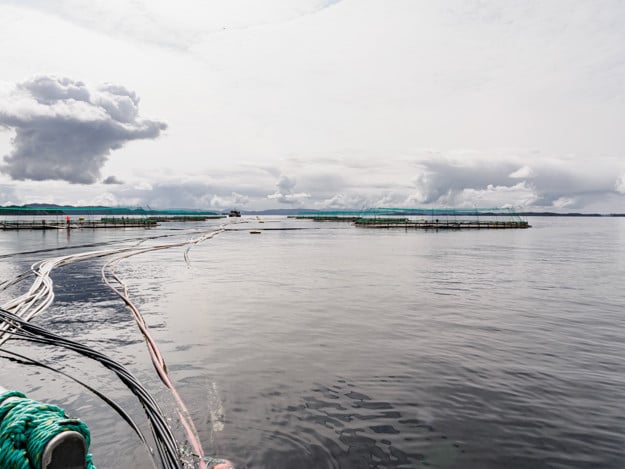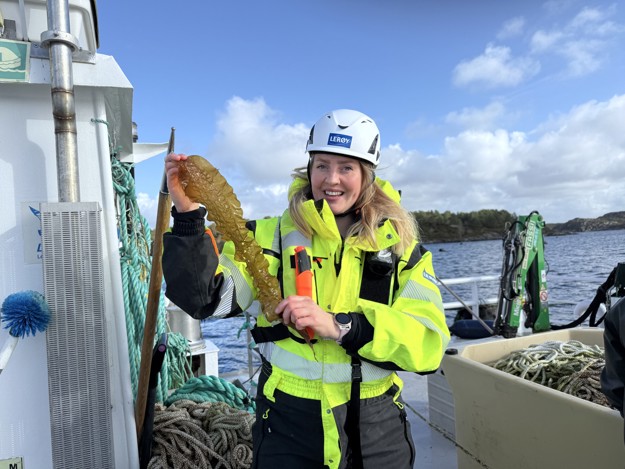Related articles:
No fish, just rings floating on the surface of the water. But the farms have not been shut down: this is being done to protect the environment below the surface. It is called fallowing.
Not many people are familiar with the practice of fallowing, which means leaving fish cages empty. It plays a vital role in ensuring that aquaculture remains sustainable.
When a fish farm is operating, it can affect the surrounding environment. Every so often, the fish are removed from the cages, and the farm is left fallow.
“This farm normally produces salmon. When there are fish in the cages, some organic material sinks to the seabed, including faeces and feed waste,” explains Rudi Jakobsen, Lead of ESG & Quality, Farming & Industry at Lerøy.

When the fish have been removed from the cages, environmental conditions around the farm are assessed. Most locations achieve a score of between 1 and 2, which means the environment is virtually undisturbed. Locations like that are highly suitable for producing salmon.
“The question is not whether aquaculture – which produces so much food – affects fjords, but how the industry is going about minimising the impact”, says Jakobsen.
Independent inspectors take seabed samples before and during operations, as well as after fallowing. You can learn more about what this involves on the Directorate of Fisheries’ website.
After over 15 years of compulsory environmental monitoring, the results show that conditions below fish farms are stable and good.
“Mother Nature herself cleans up with the help of bacteria, algae and small creatures that eat the organic material. But the area still needs a breather, which is why we have fallow periods”, says Jakobsen.

“At Lerøy, we consider this to be a resource. The organic material contains valuable nitrogen and phosphorus, which are used in fertilizers. We are currently testing whether we can collect this material and use it as a sustainable input for fertilizer and biogas.
When the farms are operating, there is still plenty of space for the fish.
“In fact, our cages contain only two percent fish and 98 percent water. So, the fish have loads of space, but their natural instinct is often to shoal”, explains Ruth Lillian Kjæmpenes, Community Contact Aquaculture at Lerøy.
She has 30 years’ experience from the Directorate of Fisheries, where her roles included leading the supervision department for Central Norway.
Kelp is part of the solution to the challenge of dealing with the organic material produced by the fish. In collaboration with the environmental NGO Bellona, Lerøy runs Ocean Forest, whose business activities include growing sugar kelp.
Malin Kleppe of Ocean Forest says that sugar kelp has a fantastic quality: it grows by absorbing nitrogen and phosphorus from the water. Those are precisely the substances released by aquaculture. And for the kelp, they are food.
“It is wonderful that something which belongs naturally in the ocean can also help to clean it”, says Kleppe.

Kelp can be made into food, animal feed, biodegradable plant pots and even bioplastics.
“Lerøy is heavily involved invested in this, because we know that the fjord is not just somewhere we produce food. If we reuse organic materials in the right way, it can also be part of the solution.”